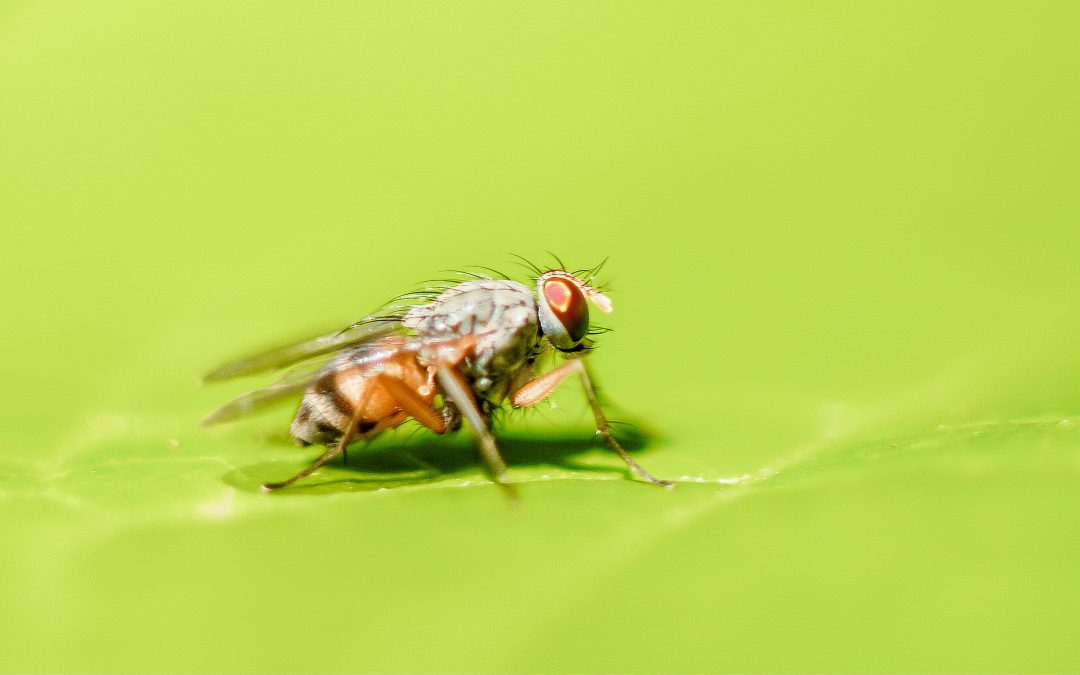In 1908, looking to test Mendel’s theories on heredity, Thomas Hunt Morgan began studying Drosophila melanogaster (also known as the fruit fly or vinegar fly) in his “Fly Room” at Columbia University. Dr. Morgan and his students studied flies, looking for mutations, and found that some individuals had white eyes instead of the usual red eyes. Experimentation on the prevalence and propagation of the mutation led to the first proof that the chromosomal theory of inheritance was correct, and established drosophila as the first model research organism. The use of drosophila has been extremely fruitful in the past 100 years. Since Dr. Morgan’s experiments, drosophila research has been featured in over 100,000 scientific papers. This includes being involved in Nobel prize-winning research five times (in 1933, 1946, 1995, 2004, and 2011).
In the first half of the twentieth century, drosophila were mainly used to study inheritance and genetics. However, since the late 1950’s, research with drosophila has expanded to include a wide field of study. 75% of human genes related to disease are present in flies, allowing scientists to better understand how human diseases function by observing how the partner genes behave in flies. The genes of flies are easy to manipulate, so it’s possible to target very specific behaviors or development processes when inducing genetic mutations. This ability to specifically target genes with mutations allows researchers to look at how those mutations affect the development of specific body parts, and how the genes that regulate which part of the embryo develops into which organs and other body parts.
The list of applications for drosophila research goes on and on, including fields such as: physiology, behavior, cancer, aging, biological and neurological development, nutrition, evolution, biomedical science, sleep, regeneration, gene regulation, stem cells, addiction, and learning and memory. For an interesting summary of the history of drosophila research, check out the short films produced by the Manchester Fly Facility here and here.
Drosophila are very popular subjects for experimentation for a multitude of reasons. Their small size makes it easy to study large numbers of subjects without using a lot of space. They have a fast breeding cycle, going from eggs to fully mature in about 10 days, which makes it easy to study effects across multiple generations in a short time period. They are also cheap, which is an added bonus to a researcher’s budget. Our drosophila and small insect chambers are well suited to rearing drosophila for research purposes. Drosophila like to be at about 25°C and 70% humidity. Our chambers have an operating range of 15-60°C and can be equipped with humidity generators, so achieving the ideal drosophila conditions is no problem. The interior parts of the incubator are also protected so that the drosophila growth medium won’t corrode them. In addition to drosophila, our incubators are great for rearing mosquitos (which prefer 28°C and 80% humidity), sand flies (22-28°C and 70-95% humidity), and many other types of insects.
For more information, see our drosophila and small insect chambers product page. To request a quote or get more information, visit our Contact Us page or call us at (800) 998-0500.

